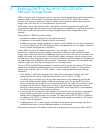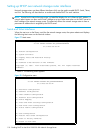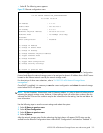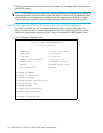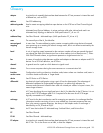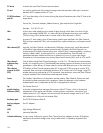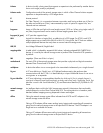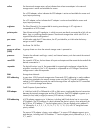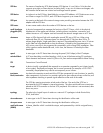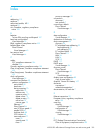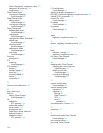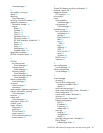126
online For the network storage router, online indicates that at least one adapter in the network
storage router is active and available for access.
For a SCSI adapter, online indicates the SCSI adapter is active and available for access and
input/output processing.
For a FC adapter, online indicates the FC adapter is active and available for access and
input/output processing.
originator The Fibre Channel N_Port responsible for starting an exchange. A FC originator is
comparable to a SCSI initiator.
point-to-point One of three existing FC topologies, in which two ports are directly connected by a link with no
fabric, loop, or switching elements present. The network storage router which uses FC-AL to
support Point-to-Point configurations.
port name A field value under the FC Status Menu; the FC port identifier; a 64-bit value the factory
assigns to each FC adapter.
post See Power On Self Test.
power on self test
(POST)
A group of tests run when the network storage router is powered on.
processor Contains the arithmetic and logic, control, and internal memory units that control the network
storage router.
reset SCSI For a specific SCSI bus, the host clears all inputs and outputs and then resets the bus and all the
devices connected to it.
responder The logical function in an N_Port responsible for supporting the exchange initiated by the
originator in another N_Port. A FC responder is comparable to a SCSI target. The network
storage router is often the responder.
SAN Storage Area Network
SCC addressing A menu item. SCSI-3 network storage router Commands (SCC) addressing is used to address
SCSI devices attached to the network storage router using the SCC logical unit addressing
method. In SCC addressing mode, the network storage router will respond to FCP commands
as a SCC network storage router device.
SCSI Small Computer System Interface
SCSI adapter A 16-bit fast/wide SE or Differential or LVD or 8-bit narrow single-ended physical connection
between the network storage router and the SCSI devices. Each SCSI adapter supports up to
sixteen (for fast/wide) or eight (for narrow) SCSI devices, including itself.
SCSI addressing A SCSI adapter supports up to 16 devices, including itself. Each device has its own unique
SCSI address. The SCSI address of a device dictates the device’s priority when arbitrating for
the SCSI bus. SCSI address “7” has the highest priority. The next highest priority address is
“6” followed by 5, 4, 3, 2, 1, 0, 15, 14, 13, 12, 11, 10, 9, 8, with “8” being the lowest
priority address.
The narrow SCSI adapter is factory set to address 7. A narrow SCSI adapter supports up to
eight devices, including itself. SCSI address “7” has the highest priority followed by 6, 5, 4, 3,
2, 1, and 0.



